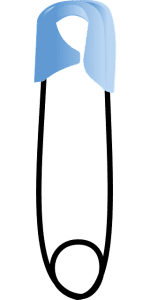Baby Proofing Your House
Your family is starting to grow, and with it comes everything that comes with children. Before long you’ll have toys everywhere, your dog will eat your baby’s socks and if you go away you might notice a few crayon marks on the walls. The truth is, as a parent there are good days when you feel things are running smoothly and other days when your patience wears thin. Having experienced this myself first-hand and helping friends through this process, I thought I’d share my tips for how to baby proof your house.
No matter where you are when you have a baby, you will need to decide how best to baby proof your house for their safety.
Baby proofing a house is really important as it helps to maintain your child’s safety. If you are looking for a baby proofing checklist, or just need some baby proofing tips, you should read this article.
Here are the top 37 elements you need to baby proof:
- Electrical outlets
- Kitchen cabinets
- Garage
- Shed
- Working area with tools
- Kitchen drawers especially with knives
- All household products (It is a great idea to sort through them and only keep what you really need)
- All medications and medicine cabinets
- All stairs should be blocked
- Outside door if you have an older toddler
- Fence your pool and fence your backyard
- Any kind of water reservoir should not be accessible
- Strings from blinds, curtains, etc
- Any objects that could fall on your baby. Any loose furniture can be secured with a strap like television, dressers, etc
- Swings should not be accessible to your toddler if you are not around
- Matches and lighters
- Gasoline and windshields washer
- Garage door opener
- Hot iron, curling iron
- Never leave a child in a bath unattended for even one second
- Any slippery surface
- Choking hazards in the crib
- Cribs painted with led or that has spaced spindles
- Go around the nursery and remove any dangerous objects
- Any small objects or food that have chocking hazard
- Any object that your baby could trip on if he is just starting to learn to walk
- Any old walker with wheels
- Any aggressive animal
- Any source of heat, fire or open flame
- Any open door or window that have a low access
- Any toys that is not age appropriate for your baby
- Any recreative drugs or alcohol that you could be using
- ANY GUN OR WEAPONS!
- Any pointy objects like scissors, forks, compass, etc
- Anything you would be devastated if it was destroyed like pictures, book, money, etc, That is reverse baby proofing!
- Any high point that could be accessible to your baby
- ETC,
Baby proofing your house for your new bundle of joy (or maybe you already have a baby) can seem like a daunting task. The good news is, it doesn’t have to be that way. You don’t have to spend your whole day trying to figure out the safest ways to keep your baby safe and protected on all sides. Rather, you can focus on what really matters: bonding with your baby in peace.
If you are a parent (or even care for young children) you are probably well aware that your child can’t resist the temptation to investigate every corner of his/her room. New surroundings and unknown objects act as a magnet, enticing little ones to touch absolutely everything. This tendency to reach out and touch everything applies to your house when it’s not properly baby proofed.
Do not forget to go around the house if you arrive at a new place to be sure that the place is safe for your baby. It is not a question of telling your hosts to move everything but rather to make sure your little ones are safe.
Baby proofing 101: Safety isn’t something you do to your house, it’s something you do for your baby.


